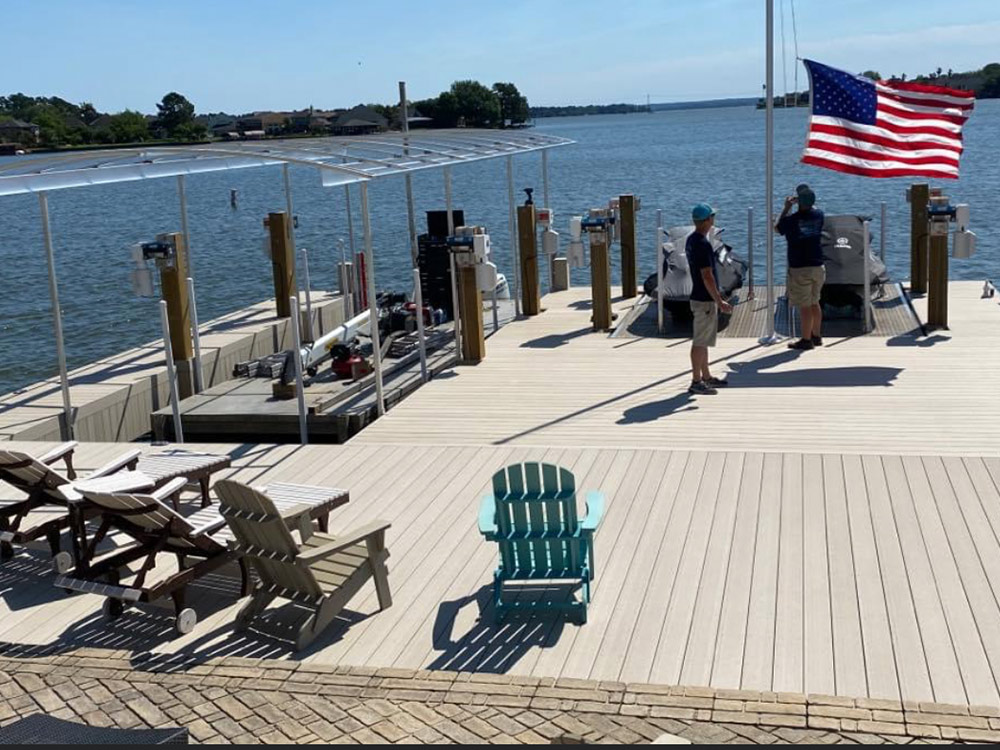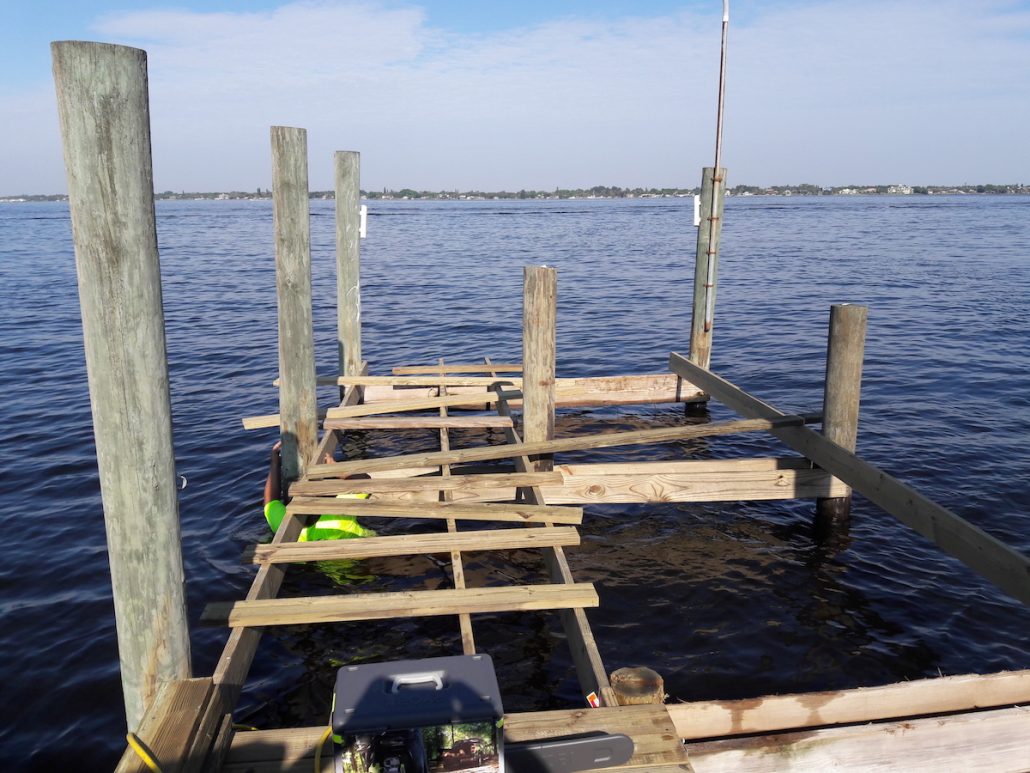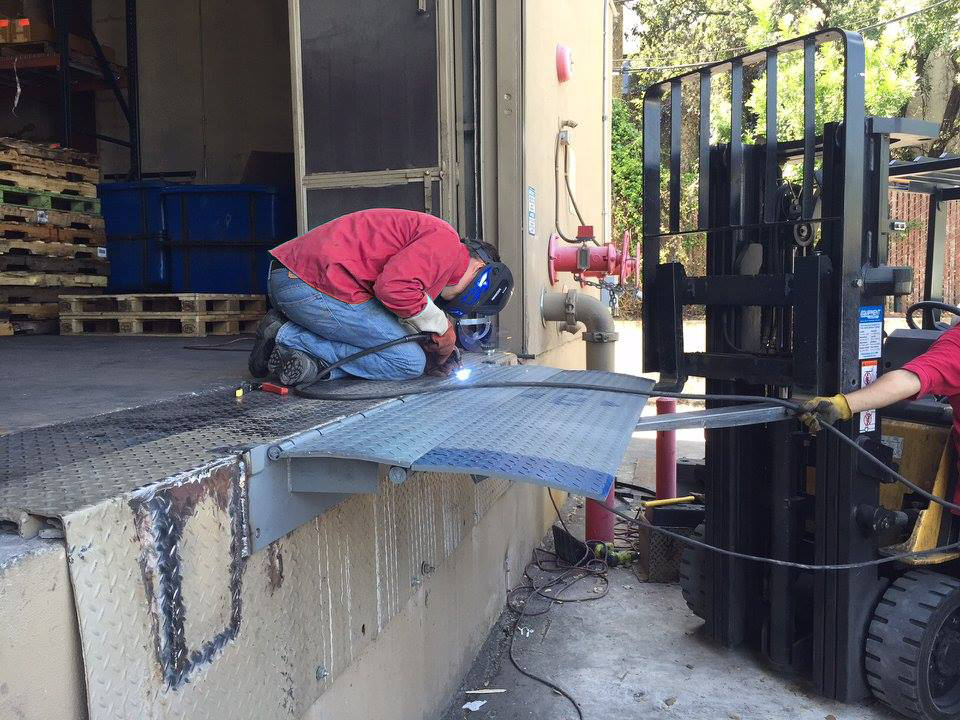Seasonal Preparations: When to Arrange Your Dock Repairs
Seasonal Preparations: When to Arrange Your Dock Repairs
Blog Article
Efficient Dock Repair Service Techniques: Guaranteeing Structural Stability
Guaranteeing the structural integrity of anchors via reliable repair service strategies is paramount for the durability and safety of marine centers. This entails a multi-faceted strategy beginning with detailed evaluations utilizing innovative modern technologies like finder equipment and from another location ran automobiles (ROVs) to find both visible and concealed problems. Ultimately, choosing the right repair products, such as composite materials and corrosion-resistant alloys, is crucial for longevity. Architectural support techniques, including the execution of cross-bracing systems and load-distribution plates, play an important role in mitigating stress and anxiety points. The importance of these techniques comes to be obvious when exploring sophisticated repair approaches and preventative maintenance approaches.
Evaluating Dock Damages
Assessing dock damage is an essential first step in making sure the architectural honesty and safety and security of any kind of docking center. This preliminary analysis involves an extensive assessment to recognize both covert and visible problems. Trick aspects to analyze consist of the dock's structure, pilings, outdoor decking, and equipment. Each part must be scrutinized for signs of wear, rot, corrosion, or other forms of deterioration that might jeopardize the structural stability.
Structural designers or qualified examiners normally execute these evaluations using specialized tools and strategies. For example, underwater inspections may utilize sonar equipment or from another location ran cars (ROVs) to detect submerged damages. Over water, visual examinations are enhanced by utilizing dampness meters and other diagnostic tools to discover underlying problems not right away visible to the naked eye.

Deciding On Fixing Materials
Selecting the ideal fixing products is a critical step in the dock reconstruction procedure, one that straight influences the longevity and efficiency of the repaired framework. Product selection have to be driven by variables such as ecological conditions, load-bearing requirements, and compatibility with existing dock parts.
Along with wood, composite products are progressively popular because of their toughness and low upkeep requirements. Composites, typically made from a blend of plastic and wood fibers, supply outstanding resistance to rot, pests, and UV damage. For steel docks, picking corrosion-resistant alloys such as galvanized steel or marine-grade aluminum is crucial to stop corrosion and make sure architectural stability in saline water problems.
Epoxy resins and marine-grade sealers are essential for repairing fractures and securing joints, giving a waterproof obstacle and boosting the dock's overall stamina. By thoroughly picking premium products, dock repair work can accomplish durable outcomes, thereby protecting versus future destruction and ensuring safe, trustworthy usage.
Architectural Reinforcement Techniques
Efficient architectural support methods are critical in guaranteeing the stability and durability of dock fixings. One fundamental technique entails the usage of steel or composite support bars (rebar) within concrete structures. Rebar provides extra tensile stamina, preventing cracks and dispersing tons much more evenly. This technique is especially efficient for docks subjected to heavy loads or severe environmental conditions.
One more necessary method is the application of fiber-reinforced polymers (FRP) These materials supply high strength-to-weight ratios and exceptional resistance to rust, making them excellent for enhancing wood or concrete docks. FRP can be used in strips or sheets and bonded with epoxy materials to boost architectural honesty.
Bracing and securing systems also play a crucial duty in structural reinforcement. Cross-bracing, using steel or wooden light beams, can counteract side forces, reducing persuading and movement. Securing systems, such as helical piers or driven piles, offer a secure structure by moving loads to deeper, a lot more stable dirt layers.
Lastly, the combination of load-distribution plates can help distribute weight a lot more equally across the dock's surface area, mitigating local stress and anxiety factors. These strategies collectively make certain that docks continue to be robust and risk-free, capable of enduring the roughness of their operational atmosphere.
Advanced Fixing Approaches

Another advanced strategy entails undersea welding, which enables fixings to be performed without the demand to dewater the location. This technique is especially beneficial for attending to architectural problems in submerged dock components, ensuring very little disruption to operations. Boosted welding strategies, paired with robotic systems, supply precision and reliability, therefore expanding the life expectancy of the dock.
Furthermore, cathodic protection systems are applied to avoid corrosion in metallic dock structures. By using sacrificial anodes or amazed present systems, these methods successfully minimize the electrochemical procedures that lead to product damage.
Last but not least, progressed surveillance innovations, such as you can check here architectural health and wellness monitoring (SHM) systems, give real-time information on the condition of dock frameworks. These systems allow proactive upkeep and timely treatments, eventually ensuring the long-lasting structural stability of the dock.
Maintenance and Avoidance
Upkeep and prevention are basic ideas that underpin the longevity and safety and security of dock structures. Routine inspections are vital, allowing for very early detection of wear and tear, possible weaknesses, and environmental influences. A proactive technique, entailing routine look for corrosion, rot, and structural changes, mitigates expensive repairs and extends the dock's functional life.
Preventative steps must consist of published here applying protective layers to metal elements to defend against rust and utilizing treated timber to stand up to decay. Additionally, guaranteeing correct drainage and ventilation can protect against water buildup, which is a common source of architectural degradation. Including top quality materials and adhering to producer standards throughout building and construction and repair work phases also play crucial roles in improving resilience.

Training personnel in dock upkeep finest methods makes certain regular application of safety nets. Leveraging technological advances, such as drones for examinations and sensing units for real-time tracking, can even more boost upkeep efforts. By focusing on upkeep and prevention, dock proprietors can make sure architectural stability, operational safety, and cost-efficient monitoring over the dock's life expectancy.
Conclusion
In final thought, preserving the architectural honesty of aquatic facilities necessitates detailed dock fixing techniques. Advanced repair work methods, combined with normal upkeep read review practices, guarantee the dock stays functional and secure under varied ecological problems.
Ensuring the architectural integrity of docks through effective repair techniques is critical for the durability and safety and security of aquatic centers.Selecting the ideal repair work products is an essential action in the dock repair process, one that directly influences the long life and efficiency of the fixed structure.Effective structural support methods are essential in making certain the security and durability of dock repair work. By prioritizing upkeep and avoidance, dock owners can ensure architectural stability, operational safety and security, and cost-efficient monitoring over the dock's lifespan.
In conclusion, keeping the architectural integrity of aquatic centers necessitates comprehensive dock fixing methods.
Report this page